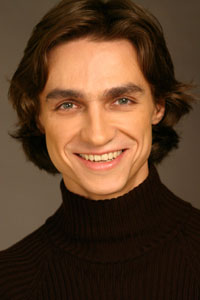Until very recent days who the culprit was for committing such an awful act was unknown, though speculation, even informed speculation, abounded.
The March 18th issue of The New Yorker has a very long, informative piece by David Remnick, that goes into the entire background to this criminal act of aggression, "Danse Macabre." (The link is to the single-screen view.) As ballet lovers know, there's a long history between the Russian Ballet and Russia's rulers. The Boshoi in particular has always mirrored in its own way Russia's conditions. It's no different now, Remnick and many of the people with whom he spoke say.
I heard this all the time. Sometimes an institution has an uncanny way of embodying the society to which it belongs. For decades, the office of the heavyweight championship of the world—and the battles for that crown, from Jack Johnson to Mike Tyson—said something about the racial dynamics of twentieth-century America. So it is at the pinnacles of Russian dance. Since the nineteenth century, the country’s two principal stages—the Mariinsky, in St. Petersburg, and the Bolshoi, in Moscow—have acted as microcosms of imperial Russia, Soviet Russia, and, now, Vladimir Putin’s Russia.How can a ballet lover not resonate to this?
After the Revolution, the imperial theatres were not, initially, a priority for the Bolshevik leadership. “It is awkward to spend big money on such a luxurious theatre,” Lenin said of the Bolshoi, “when we lack simple schools in the villages.” In 1921, Lenin told Anatoly Lunacharsky, the cultural commissar, to “lay all the theatres in the grave”—to destroy them—and focus on the urgent needs of the workers and the peasants: literacy, food, medicine. But Lunacharsky noticed that, even with civil war consuming the entire country, peasants and workers were happy to fill the seats of the Bolshoi. And it wasn’t revolutionary theatre that captivated them. It was, in part, ballet. They lacked, at first, a certain connoisseurship. Some workers, Ezrahi writes, were so ignorant of the mute art of ballet that they asked one another when the performers would begin to sing. Nevertheless, Lunacharsky insisted that the workers “ceaselessly demand opera and ballet.” The Bolshoi, in the end, was not razed.It's not a part of the focus of Remnick's piece, but this explains why Cuba's Revolution put such an emphasis on the arts, and why, one of the consequences is that today Cuba is a ballet powerhouse.


No comments:
Post a Comment